Marcia Thornton Jones's Blog, page 140
February 8, 2017
IT TAKES TWO by Jane Kelley
Writer and reader.
Neither one exists without the other.
The tree that falls in the forest does not make a sound unless someone is there to hear it.
But the relationship between writer and reader is more than light bouncing off the marks on a page and reaching the optic nerve.
My writing improves when I consider what impact my words have upon the reader. What ideas am I trying to communicate? What emotions am I hoping to inspire?
My reading deepens when I am aware of what the writer intended. What's the context? What's the background? What's the rest of the conversation?
Yes there are many stories that need to be told and many tales we want to hear. But in the end, there is only one thing that matters -- that we connect.
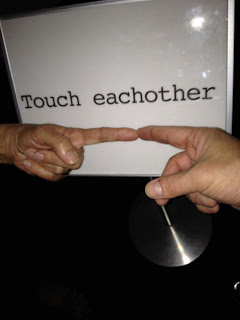
Neither one exists without the other.
The tree that falls in the forest does not make a sound unless someone is there to hear it.
But the relationship between writer and reader is more than light bouncing off the marks on a page and reaching the optic nerve.
My writing improves when I consider what impact my words have upon the reader. What ideas am I trying to communicate? What emotions am I hoping to inspire?
My reading deepens when I am aware of what the writer intended. What's the context? What's the background? What's the rest of the conversation?
Yes there are many stories that need to be told and many tales we want to hear. But in the end, there is only one thing that matters -- that we connect.

Published on February 08, 2017 03:00
February 5, 2017
My Valentine Pet by Deborah Lytton
A few days ago, I heard on the radio that the second most popular recipients of Valentine's Day gifts (after significant others) are pets. I think that if Valentine's Day is about telling someone you love them, then my dog really does deserve a Valentine. She is by my side as my constant companion when I write--no matter if I am up all night finishing revisions or waking early in the morning to work on new manuscripts. Usually she sits in the chair with me, almost as if she can read the words I am typing. And she has inspired many animal characters in my books. All of the dogs I have loved have featured in my work. Because they have meant so much to me, I wanted to share that same love of pets with my readers.
So that brings me to my topic of today, using animals in writing.
 My Writing Buddy, FaithIn my first published book, JANE IN BLOOM, I use the relationship with a new puppy to help Jane overcome her grief. The way she interacts with the dog is a reflection of her own emotions which change as she evolves throughout the book.
My Writing Buddy, FaithIn my first published book, JANE IN BLOOM, I use the relationship with a new puppy to help Jane overcome her grief. The way she interacts with the dog is a reflection of her own emotions which change as she evolves throughout the book.
In my second published book, SILENCE, I have a stray cat with baby kittens that bonds with my main character Hayden through his calm and gentle demeanor. It is through the actions of a stray animal that trusts Hayden that I show the reader who Hayden is as a person.
In my upcoming MG series release, RUBY STARR, I have introduced a pair of lovable but chaotic Labradoodles who cause a lot of mischief and create humor for the main character, Ruby.
I love animals, so writing about them is something that I greatly enjoy, but I also think relating to animals adds another dimension to the depiction of a character. Interacting with pets demonstrates compassion or fear or perhaps even cruelty. So in honor of my Valentine Faith, see what animals you can add into your work today.
Happy Valentine's Day!
So that brings me to my topic of today, using animals in writing.
 My Writing Buddy, FaithIn my first published book, JANE IN BLOOM, I use the relationship with a new puppy to help Jane overcome her grief. The way she interacts with the dog is a reflection of her own emotions which change as she evolves throughout the book.
My Writing Buddy, FaithIn my first published book, JANE IN BLOOM, I use the relationship with a new puppy to help Jane overcome her grief. The way she interacts with the dog is a reflection of her own emotions which change as she evolves throughout the book.In my second published book, SILENCE, I have a stray cat with baby kittens that bonds with my main character Hayden through his calm and gentle demeanor. It is through the actions of a stray animal that trusts Hayden that I show the reader who Hayden is as a person.
In my upcoming MG series release, RUBY STARR, I have introduced a pair of lovable but chaotic Labradoodles who cause a lot of mischief and create humor for the main character, Ruby.
I love animals, so writing about them is something that I greatly enjoy, but I also think relating to animals adds another dimension to the depiction of a character. Interacting with pets demonstrates compassion or fear or perhaps even cruelty. So in honor of my Valentine Faith, see what animals you can add into your work today.
Happy Valentine's Day!
Published on February 05, 2017 12:57
February 4, 2017
INTERVIEW WITH THE AUTHORS OF MISFORTUNE ANNIE
1.
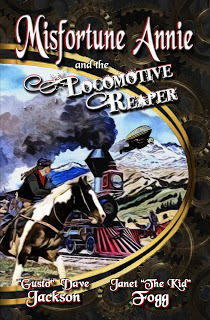 We're joined today by not one but two authors: Janet "The Kid" Fogg and "Gusto" Dave Jackson, co-authors of the MG MISFORTUNE ANNIE:
We're joined today by not one but two authors: Janet "The Kid" Fogg and "Gusto" Dave Jackson, co-authors of the MG MISFORTUNE ANNIE:Please tell us the stories behind your nicknames.
Janet’s came about because she’s a little younger than her hubby, so he affectionately called her Kid. Mine is a little more goofy. There used to be an ad for beverages with a slogan of “Go for the gusto!” During tech school in the Navy, I used to do a lot of crazy stuff, saying, “I’m going for the gusto,” namely sweet-talking ladies even though I was uglier than a knot in a tree. My chums started calling me Gusto Dave.
2. Dave and Janet, the two of you both reside in Colorado, and Dave, you’re from Oklahoma. How did your surroundings influence your work—the choice of subject, the description, etc.?
I can tell you that consciously my ‘neck of the woods’ had nothing to do with this story that I know of. Subconsciously is a different matter. Annie was born out of my love for Indiana Jones. Wait a minute…that sounded wrong…
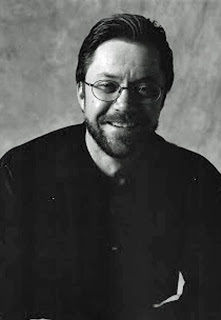 How did the two of you start writing together?
How did the two of you start writing together?First, both of us had co-authored before. Janet had a screenplay with Karen Albright that just about saw big Hollywood success. For me, after working with two others, I liked the accelerated productivity. When I launched Chiseled in Rock (a site that during this time was RMFW’s official blog) Janet twisted my arm into making her a contributor. Just kidding. She was great! I had a failed romance novel that I asked her to ‘fix’ which is now entitled A Serenade to Die For, coming out in a couple of months. And I wanted a partner from the beginning for Annie.
What was the writing process like? How did the two of you approach a collaborative project?
We’d go into the boxing ring to settle our disagreements. No. Actually, I believe story structure is a lot like building a house. You get a sturdy foundation, posts, beams, studs and walls in place, then you can get creative with siding, round windows, fuzzy carpet, paint and etcetera. If the character motivations are clear and the scenes are outlined, I don’t care what happens as long as we observe conflict. So, we get to alternate chapters and be individually creative. But I am a stickler for motivations being tight as my outstanding co-author Janet can attest.
5. I love the quote you included from Annie Oakley. What have you guys had to aim for repeatedly before finally succeeding?
Well, I’ll let you know if we succeed. Hardee har har. For me, after attending to loved ones and subsequent responsibilities, I aim to be happy always. I refuse to do anything on my time unless I love it.
6. Your “fun facts” are also perfect for the MG reader. How much research did you have to do this book? How did you approach presenting factual material for young readers?
I may be underestimating, but in the age of Google where info gushes at you effortlessly, it didn’t feel like much. Distinctly, I recall hunting for the origin of blimps and was surprised that the technology was around well before our setting. I tracked Wyatt Earp’s whereabouts and chose a historic building in Denver for a scene. That about wrapped it up. For presentation in the story, there’s none intended. I wasn’t going to slow the plot to ‘teach’ kids. Janet got the idea for the Fun Facts which I loved.
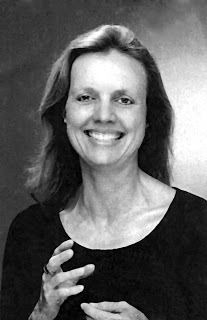 What was the path to publication like?
What was the path to publication like?It’s fraught with all kinds of creepy ghouls and pitfalls! Oh my!
What did you like to read when you were young?
Comic books. The first grown-up full sized novel I remember tackling was Dracula. It surprised me how differently it compared to the Hammer films with Christopher Lee. Drac was supposed to have a mustache!
How did your own experiences with young readers (as a teacher, parent, etc.) inform how you wrote MISFORTUNE ANNIE?
As a kid, I had a hard time finding interesting real books, long before Goosebumpsand Captain Underpants. Today, it still boggles my mind that publishers feel an obligation to get all ethereal with youth literature. The fun to serious ratio continues to be out of whack! Generation Z will have to get all business-minded after they turn 21. Leave them alone for now.
1 When will MISFORTUNE ANNIE ride again?
Very soon, probably by October 2017. And they get funnier. In book 2, Annie tangles with a Voodoo doctor. An older Huckleberry Finn smuggles her downriver to a showdown with this villain, but can she trust him? Queen of New Orleans, Marie Laveau, steps in to help. Later in the series, there will be cameos by Teddy Roosevelt, Buffalo Bill Cody, Thomas Edison, and bouts with pirates, an Appalachian witch, Sasquatch, a beast master, and more. Will Annie be able to outwit them all?
Follow the authors online:
Misfortune Annie Official WebsiteMisfortune Annie on FacebookJanet "The Kid" Fogg on FacebookJanet "The Kid" Fogg on GoodreadsJanet "The Kid" Fogg on YouTube
"Gusto" Dave Jackson on Facebook"Gusto" Dave Jackson on Goodreads
Published on February 04, 2017 05:00
February 3, 2017
Two "Musts" for Middle Grade Novels
This is kind of a funny post for me to write. While I am so grateful to have published 2 middle grade novels, I have written SO MANY that I haven't been able to sell! It makes me wonder sometimes: what do I know about writing middle grade novels? But I keep trying. And while I may not always be able to translate what I've learned into books that sell, I have always always LOVED reading middle grade books. That 8-12 year old is still quite alive and well inside of me. According to her, here are two things middle grade novels MUST have.
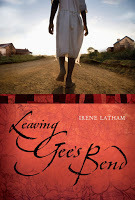 paperback edition
paperback editioncoming March 2017!1. action over introspection – kids this age need things to happen! When I do school visits, the parts the kids cite as their favorites of LEAVING GEE'S BEND are without fail, the action/adventure parts... like Ludelphia wild ride on the Alabama River. This is a good reminder to the writer-me to keep things moving!
 2. include magic/wonder/enchantment/discovery – no, this does not mean all middle grade novels need to be fantastical! It just means kids this age have rich imaginative lives, so one surefire way to engage them is to give them a new world to wonder about. In DON'T FEED THE BOY, I was able to show kids life behind-the-scenes at the zoo. Who hasn't wondered about that?
2. include magic/wonder/enchantment/discovery – no, this does not mean all middle grade novels need to be fantastical! It just means kids this age have rich imaginative lives, so one surefire way to engage them is to give them a new world to wonder about. In DON'T FEED THE BOY, I was able to show kids life behind-the-scenes at the zoo. Who hasn't wondered about that?So that's my advice, for what it's worth. As for me, I am going to keep trying! For more on this, see my post yesterday at LiveYour Poem on perseverance.------Irene Latham's first bits of writing were love poems – for her mother. An award winning author of two novels for children LEAVING GEE'S BEND and DON'T FEED THE BOY and three poetry picture books, she was named the winner of the 2016 International Literary Association-Lee Bennett Hopkins Promising Poet Award. Her latest book (co-written with Charles Waters) is CAN I TOUCH YOUR HAIR? Poems of Race, Mistakes and Friendship (Lerner, 2017). irenelatham.com
Published on February 03, 2017 03:30
February 2, 2017
Blood and Guts By Ann Haywood Leal
Blood and guts . . . it's the deep down secondary part of our story about which we agonize. Putting your work on paper, especially if you know someone is going to eventually read it, takes guts. And in order to get your story out there—the real story that you want to tell—takes what sometimes feels like a little bleeding on your part.
In order to start something, or even more so, to keep something going, you need to be willing to make mistakes.
 It seems complicated, but the hard part is already taken care of. You are already have the bare bones of your story. You already have it in you. Now all you have to do is show up at the computer or your notepad or your journal every day, and write. Take what has been percolating inside your head, little snippets of ideas or conversations, or problems, and write them down. You will start to see that secondary part of the story emerge . . . the emotion.
It seems complicated, but the hard part is already taken care of. You are already have the bare bones of your story. You already have it in you. Now all you have to do is show up at the computer or your notepad or your journal every day, and write. Take what has been percolating inside your head, little snippets of ideas or conversations, or problems, and write them down. You will start to see that secondary part of the story emerge . . . the emotion.  When you write about the middle-grade experience, you are most likely a person who actually remembers being ten or eleven or twelve. And not always fondly! You may not remember exact details—you may not be able to actually tell someone, word for word, about a conversation you had with your best friend in fifth grade, but I’d be willing to bet you could still drum up your old emotions. And those old emotions? They are the blood and guts of your story.
When you write about the middle-grade experience, you are most likely a person who actually remembers being ten or eleven or twelve. And not always fondly! You may not remember exact details—you may not be able to actually tell someone, word for word, about a conversation you had with your best friend in fifth grade, but I’d be willing to bet you could still drum up your old emotions. And those old emotions? They are the blood and guts of your story. That time you threw up in front of the whole sixth grade in the lunch room? Channel that emotion into your character. The time you spilled something down the front of you and you had to go back to class looking as if you wet your pants . . . toss that feeling into your book, too.
It's all there. Dig into your own blood and guts to give your story life and authenticity. Like the infamous (Hemingway?) writing quote (paraphrased): It's easy. Just sit down and open up a vein.

Published on February 02, 2017 03:47
January 25, 2017
ON BEGINNING TO ILLUSTRATE (HOLLY SCHINDLER)
I released a new MG this month: ALEXANDER AND THE AMAZING WIDE-AWAKE.

It's about a young boy with the best thinking cap of all time--the kind of thinking cap that makes everything easy...until one day, when the hat breaks. And suddenly, the boy who'd been good at everything is good at nothing. What's Alexander to do without his super power???
For those of you who are familiar with my previous releases, ALEXANDER AND THE AMAZING WIDE-AWAKE stars Alexander Gum, who was a secondary character in '16's short MG read WORDQUAKE.
Both books are lightly illustrated, making them great for the graphic novel or comic book addict in your life. They make fantastic "bridge books," helping readers begin to make that transition toward non-illustrated novels.
I had to make a bit of a transition myself, in order to write both ALEXANDER and WORDQUAKE: a transition into digital art. I've had several fellow writers ask what the first steps were that I took toward illustration. For a while, I told them: a Wacom drawing tablet (I have an Intuos Pro) and Clip Studio software (at $50, it's super-cheap, and it has all the bells and whistles a new illustrator needs without being overwhelming or intimidating).
But really, there's a step I took before that. Maybe the most important step of all: I called myself an illustrator. Even though I'd done NOTHING with digital art, even though my art experience had come decades ago and was on paper and canvas. I started calling myself an author / illustrator from the very beginning.
I'm not unlike most authors when I say it took years and many manuscripts and a pile of rejection before I sold my first book. I spent seven and a half years of full-time effort trying to get that elusive first "yes." During those seven and a half years, I was hesitant to call myself an author. I hadn't sold anything, so it didn't seem I had a right to that title. Or it resulted in the inevitable follow-up questions, during which I'd get THE LOOK: every writer knows it. The look that you always interpret to mean, Well, you know you aren't really an author if you aren't published. It's a hobby, not a real occupation.
But here's the biggest lesson I learned from all of that: you should never allow the outside world to define you. YOU should be the only person who defines you. Waiting around for the outside world to give you a title--or prestige--or a sense of self-worth (and those things so often seem tangled up into the same ball) is a recipe for disaster and heartbreak.
SO: Whatever resolution you've made for '17, whatever new goal you're setting out to achieve, whatever beginning you've undertaken, pause for just a moment and give yourself a title. Don't wait to achieve the goal. If you're writing, you're a writer. If your drawing, you're an artist. Get in the habit of owning the title. Say it out loud, proudly:
I'm a ___.
Because you are.

It's about a young boy with the best thinking cap of all time--the kind of thinking cap that makes everything easy...until one day, when the hat breaks. And suddenly, the boy who'd been good at everything is good at nothing. What's Alexander to do without his super power???
For those of you who are familiar with my previous releases, ALEXANDER AND THE AMAZING WIDE-AWAKE stars Alexander Gum, who was a secondary character in '16's short MG read WORDQUAKE.
Both books are lightly illustrated, making them great for the graphic novel or comic book addict in your life. They make fantastic "bridge books," helping readers begin to make that transition toward non-illustrated novels.
I had to make a bit of a transition myself, in order to write both ALEXANDER and WORDQUAKE: a transition into digital art. I've had several fellow writers ask what the first steps were that I took toward illustration. For a while, I told them: a Wacom drawing tablet (I have an Intuos Pro) and Clip Studio software (at $50, it's super-cheap, and it has all the bells and whistles a new illustrator needs without being overwhelming or intimidating).
But really, there's a step I took before that. Maybe the most important step of all: I called myself an illustrator. Even though I'd done NOTHING with digital art, even though my art experience had come decades ago and was on paper and canvas. I started calling myself an author / illustrator from the very beginning.
I'm not unlike most authors when I say it took years and many manuscripts and a pile of rejection before I sold my first book. I spent seven and a half years of full-time effort trying to get that elusive first "yes." During those seven and a half years, I was hesitant to call myself an author. I hadn't sold anything, so it didn't seem I had a right to that title. Or it resulted in the inevitable follow-up questions, during which I'd get THE LOOK: every writer knows it. The look that you always interpret to mean, Well, you know you aren't really an author if you aren't published. It's a hobby, not a real occupation.
But here's the biggest lesson I learned from all of that: you should never allow the outside world to define you. YOU should be the only person who defines you. Waiting around for the outside world to give you a title--or prestige--or a sense of self-worth (and those things so often seem tangled up into the same ball) is a recipe for disaster and heartbreak.
SO: Whatever resolution you've made for '17, whatever new goal you're setting out to achieve, whatever beginning you've undertaken, pause for just a moment and give yourself a title. Don't wait to achieve the goal. If you're writing, you're a writer. If your drawing, you're an artist. Get in the habit of owning the title. Say it out loud, proudly:
I'm a ___.
Because you are.
Published on January 25, 2017 05:00
January 22, 2017
January Beginnings
I've been too overwhelmed with endings to think about beginnings this month, but I've squirreled away the advice I'm reading for when it's time to begin something new. I'm in the middle of a feast of freelance assignments with with four deadlines between January 1 and February 30. I'm very grateful for the work, but does it have to come all at once?
I do have two new publications to celebrate this month, and I'm so excited to see these books take their first steps into the world!
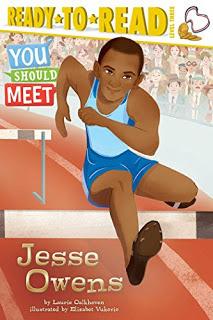

I do have two new publications to celebrate this month, and I'm so excited to see these books take their first steps into the world!


Published on January 22, 2017 04:23
January 18, 2017
Getting Started . . . Somewhere Special by Claudia Mills
I adored the Mark Twain line with which Naomi Kinsman opened her recent Smack Dab post: "The secret to getting ahead is getting started."
Oh, but getting started - writing that very first line of a very new book - can be so overwhelming. Even if you know you're going to change that line a dozen times before publication, this is still the moment when you are first putting pen to paper (yes, I still write my books by putting pen to paper). It's exciting, but also terrifying.
Here's what I do so that I can face the writing of that fateful first line with more delight than dread. I go out of my way to acknowledge the significance of this day of new beginnings; I celebrate its specialness by making it as special as possible.
I don't write the first line of a new book at home, lying on my usual couch, with my usual mug of Swiss Miss hot chocolate by my side, and my usual cat purring on my lap. Instead, I head off somewhere else. If the journey of a thousand miles begins with a single step, I'm going to poke out my toe for that first step with some fanfare.
Back when my writing group had its annual retreat up at Lake Dillon in the Colorado Rocky Mountains, I'd try to time the launching of a new project for that glorious weekend with dear writing friends in that stunning natural setting, and I'd write its first line in their company.
I've written the first line of a new book at "write-ins" at the homes of author friends.(I'm talking about you, Jeannie Mobley and Jean Reidy!)
I've invited a writing friend to come with me to a fancy hotel and sit in its elegant lobby, nibbling on over-priced treats, for the ceremonial composing of that first line.
My favorite-ever first line was written on a family vacation to Green River, Utah. I sat in our motel room, looking out at the river, and wrote the first line of my chapter book How Oliver Olson Changed the World. That first line - which stayed as the first line, through all the subsequent drafts - was (and is): "Oliver Olson looked up at the moon."
The next time you're daunted by that very first line of a brand-new book, try going somewhere special, with somebody special. It's a special moment. Go ahead, and let it be special.
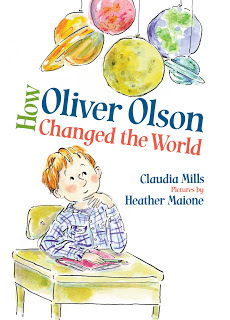
Oh, but getting started - writing that very first line of a very new book - can be so overwhelming. Even if you know you're going to change that line a dozen times before publication, this is still the moment when you are first putting pen to paper (yes, I still write my books by putting pen to paper). It's exciting, but also terrifying.
Here's what I do so that I can face the writing of that fateful first line with more delight than dread. I go out of my way to acknowledge the significance of this day of new beginnings; I celebrate its specialness by making it as special as possible.
I don't write the first line of a new book at home, lying on my usual couch, with my usual mug of Swiss Miss hot chocolate by my side, and my usual cat purring on my lap. Instead, I head off somewhere else. If the journey of a thousand miles begins with a single step, I'm going to poke out my toe for that first step with some fanfare.
Back when my writing group had its annual retreat up at Lake Dillon in the Colorado Rocky Mountains, I'd try to time the launching of a new project for that glorious weekend with dear writing friends in that stunning natural setting, and I'd write its first line in their company.
I've written the first line of a new book at "write-ins" at the homes of author friends.(I'm talking about you, Jeannie Mobley and Jean Reidy!)
I've invited a writing friend to come with me to a fancy hotel and sit in its elegant lobby, nibbling on over-priced treats, for the ceremonial composing of that first line.
My favorite-ever first line was written on a family vacation to Green River, Utah. I sat in our motel room, looking out at the river, and wrote the first line of my chapter book How Oliver Olson Changed the World. That first line - which stayed as the first line, through all the subsequent drafts - was (and is): "Oliver Olson looked up at the moon."
The next time you're daunted by that very first line of a brand-new book, try going somewhere special, with somebody special. It's a special moment. Go ahead, and let it be special.

Published on January 18, 2017 04:31
January 16, 2017
How to Start AND Finish a Project
by Naomi Kinsman
“The secret to getting ahead is getting started.” ― Mark Twain
“By failing to prepare, you are preparing to fail.” ― Benjamin Franklin
I often find myself frozen at the intersection between these two truths. Should I make a plan? Should I simply start? I know I’m not the only one. In fact, this conundrum is so common, we categorize ourselves into camps. “I’m a pantser!” “I’m a plotter!”
If only it were as easy as one approach or the other being the right way. Unfortunately, no. But, I don’t think throwing up our hands and giving in to the chaos of our process (whether the chaos comes from over-planning or over-improvising) is the way to go either.
Who I am to say so? As an author and the founder of a nonprofit, with a visionary personality (you might even swap in the word “addiction”), I’m a serial starter. As an educator, mentor and consultant, I serve as a trail guide for many other starters. I’ve seen my fair share of beginnings, and along the way, observed many successes and stumbling blocks.
What I’ve come to believe is that the pantsers are more likely to start, and the plotters are more likely to finish. If you’d prefer to both start AND finish projects, being in one camp or the other creates problems.
Pantsers aren’t afraid of what they don’t know. In fact, they can’t wait for the surprise that’s around the next corner. They can’t wait, that is, until the surprise that’s around the next corner turns out to be a dragon. With no idea how to get past the monster, the pantser leans on her strength and starts over. Maybe the next idea will be problem-free.
Plotters gather information and plan, plan, plan. They anticipate possible problems and create solutions. Committed plotters craft back-up plans for their back-up plans. Often by the time they finally feel ready to start, they’re exhausted. While they may push on despite their exhaustion, the process to the finish line (while well-planned) can feel as arduous as a long-term battle with a legion of dragons.
Is there a way to split the difference? Yes! I’ve seen it work, and while this approach stretches a starter in his or her area of lesser strength, in my opinion the benefits outweigh the challenges.
Here’s a road-map to try out:
1. Choose an idea.
2. Spend a few hours brainstorming, capturing thoughts, building a picture of what you know about your idea so far.
3. Look over your brainstorm and choose a starting place. Ask yourself, “What could I tackle today, in say, an hour or less?”
4. Imagine your starting place as the tiny loose end of a complex knot. Start untangling, and spend a week (or maybe two) following the loosening string in toward the heart of the knot.
5. Once you’re at least elbow-deep in the project, come up for air. Return to your brainstorm, and add notes. What do you know now? What do you wonder?
6. Use these informed notes to structure a loose plan. Imagine this plan as the framing of a house. You don’t need to choose the paint color right now, but you do need to define the size and shape of the rooms.
7. Once you’ve crafted a frame that you feel is relatively reliable, walk away for at least a day. Then, return, review, and revise.
8. Choose a “room” as a starting place, and return to the brainstorming process. That one room is now your knot to untangle.
9. From here, the process continues, alternating between pantsing and planning until you reach the finish line.
Whether you’re a pantser or a plotter, or a little of both, know that you’re not alone in facing dragons. Especially if you’re creating something beautiful, life-giving, and heart-changing, resistance is inevitable. Please don’t give up. Please wrestle your way through, no matter what it takes, because the world needs the beautiful things only you can bring to life. Here’s to a year filled with starts AND finishes.
~~~~~~~~~~~~
Naomi Kinsman is an author, educator and creativity coach. She is the author of the FROM SADIE'S SKETCHBOOK series and recently collaborated with singer, Natalie Grant, on the GLIMMER GIRLS series. Naomi is also the founder and Executive Director of Society of Young Inklings, an organization that offers classes, mentorships and publishing opportunities for young authors ages 6-16. Society of Young Inklings utilizes WRITERLY PLAY, the improv-based teaching methodology that Naomi developed, as the foundation for its programming. www.naomikinsman.com
“The secret to getting ahead is getting started.” ― Mark Twain
“By failing to prepare, you are preparing to fail.” ― Benjamin Franklin
I often find myself frozen at the intersection between these two truths. Should I make a plan? Should I simply start? I know I’m not the only one. In fact, this conundrum is so common, we categorize ourselves into camps. “I’m a pantser!” “I’m a plotter!”
If only it were as easy as one approach or the other being the right way. Unfortunately, no. But, I don’t think throwing up our hands and giving in to the chaos of our process (whether the chaos comes from over-planning or over-improvising) is the way to go either.
Who I am to say so? As an author and the founder of a nonprofit, with a visionary personality (you might even swap in the word “addiction”), I’m a serial starter. As an educator, mentor and consultant, I serve as a trail guide for many other starters. I’ve seen my fair share of beginnings, and along the way, observed many successes and stumbling blocks.
What I’ve come to believe is that the pantsers are more likely to start, and the plotters are more likely to finish. If you’d prefer to both start AND finish projects, being in one camp or the other creates problems.
Pantsers aren’t afraid of what they don’t know. In fact, they can’t wait for the surprise that’s around the next corner. They can’t wait, that is, until the surprise that’s around the next corner turns out to be a dragon. With no idea how to get past the monster, the pantser leans on her strength and starts over. Maybe the next idea will be problem-free.
Plotters gather information and plan, plan, plan. They anticipate possible problems and create solutions. Committed plotters craft back-up plans for their back-up plans. Often by the time they finally feel ready to start, they’re exhausted. While they may push on despite their exhaustion, the process to the finish line (while well-planned) can feel as arduous as a long-term battle with a legion of dragons.
Is there a way to split the difference? Yes! I’ve seen it work, and while this approach stretches a starter in his or her area of lesser strength, in my opinion the benefits outweigh the challenges.
Here’s a road-map to try out:
1. Choose an idea.
2. Spend a few hours brainstorming, capturing thoughts, building a picture of what you know about your idea so far.
3. Look over your brainstorm and choose a starting place. Ask yourself, “What could I tackle today, in say, an hour or less?”
4. Imagine your starting place as the tiny loose end of a complex knot. Start untangling, and spend a week (or maybe two) following the loosening string in toward the heart of the knot.
5. Once you’re at least elbow-deep in the project, come up for air. Return to your brainstorm, and add notes. What do you know now? What do you wonder?
6. Use these informed notes to structure a loose plan. Imagine this plan as the framing of a house. You don’t need to choose the paint color right now, but you do need to define the size and shape of the rooms.
7. Once you’ve crafted a frame that you feel is relatively reliable, walk away for at least a day. Then, return, review, and revise.
8. Choose a “room” as a starting place, and return to the brainstorming process. That one room is now your knot to untangle.
9. From here, the process continues, alternating between pantsing and planning until you reach the finish line.
Whether you’re a pantser or a plotter, or a little of both, know that you’re not alone in facing dragons. Especially if you’re creating something beautiful, life-giving, and heart-changing, resistance is inevitable. Please don’t give up. Please wrestle your way through, no matter what it takes, because the world needs the beautiful things only you can bring to life. Here’s to a year filled with starts AND finishes.
~~~~~~~~~~~~
Naomi Kinsman is an author, educator and creativity coach. She is the author of the FROM SADIE'S SKETCHBOOK series and recently collaborated with singer, Natalie Grant, on the GLIMMER GIRLS series. Naomi is also the founder and Executive Director of Society of Young Inklings, an organization that offers classes, mentorships and publishing opportunities for young authors ages 6-16. Society of Young Inklings utilizes WRITERLY PLAY, the improv-based teaching methodology that Naomi developed, as the foundation for its programming. www.naomikinsman.com
Published on January 16, 2017 09:40
January 12, 2017
Begin Again by Darlene Beck Jacobson
Like many of us, my first published book was not the first novel I wrote. That remains hidden in a dusty closet where it belongs. Neither was WHEELS OF CHANGE my first foray into historical fiction.
I've recently dusted off my first historical novel, and after reading it, found some nuggets worth mining. Some characters worth getting to know better. Some scenes waiting to take me to new places.
For more than a decade I didn't know what to do with the story. Yet, always - at seemingly odd moments - the characters voices popped in and out of consciousness, cajoling me, urging me not to give up on them. They beg for their story to be told. I can't ignore their voices any longer.
So, I'm giving this "first novel" another go. I still don't know quite where it will lead me, but so far, I'm enjoying the ride.
I've recently dusted off my first historical novel, and after reading it, found some nuggets worth mining. Some characters worth getting to know better. Some scenes waiting to take me to new places.
For more than a decade I didn't know what to do with the story. Yet, always - at seemingly odd moments - the characters voices popped in and out of consciousness, cajoling me, urging me not to give up on them. They beg for their story to be told. I can't ignore their voices any longer.
So, I'm giving this "first novel" another go. I still don't know quite where it will lead me, but so far, I'm enjoying the ride.
Published on January 12, 2017 06:07



